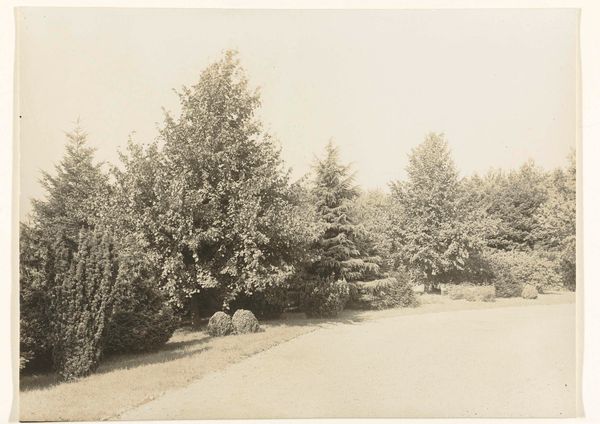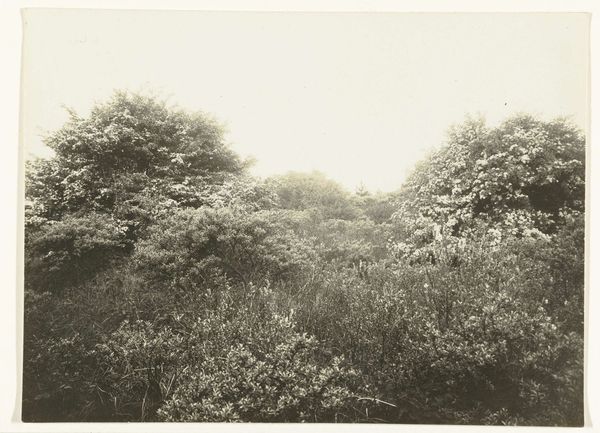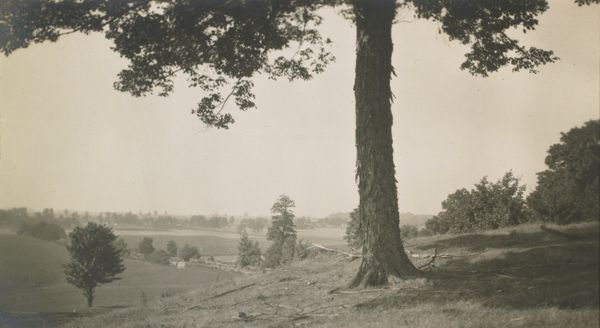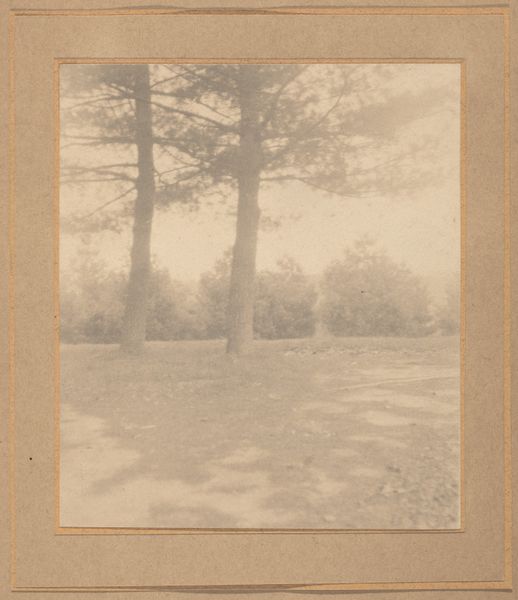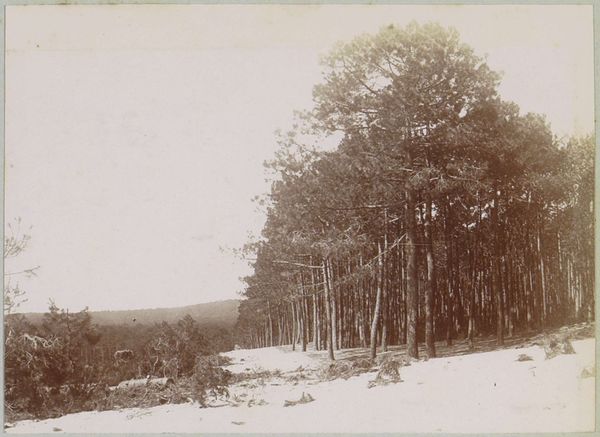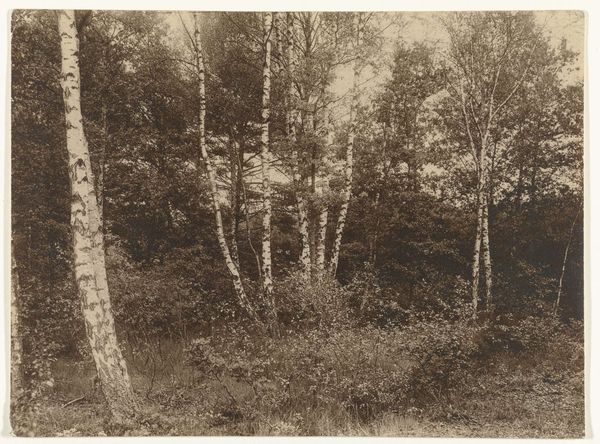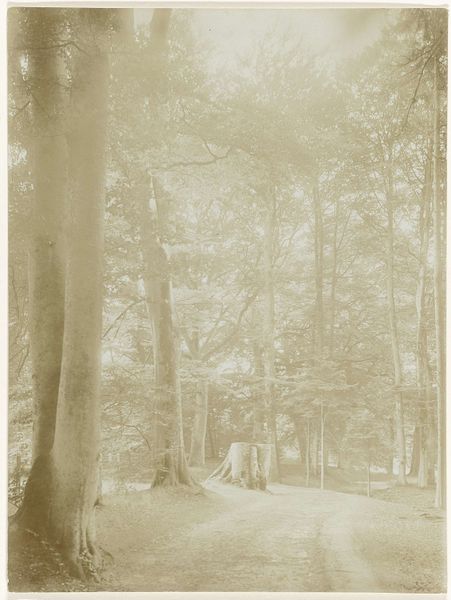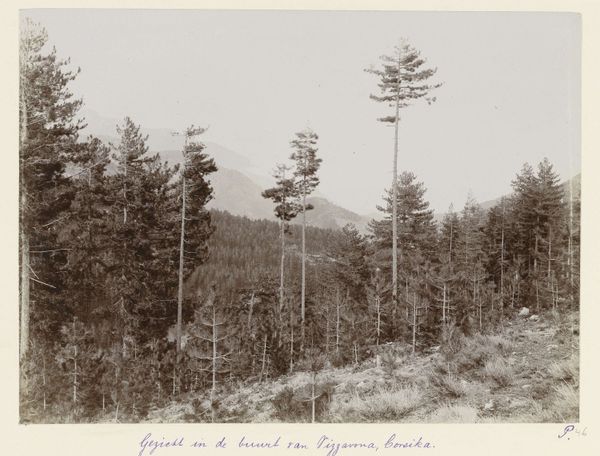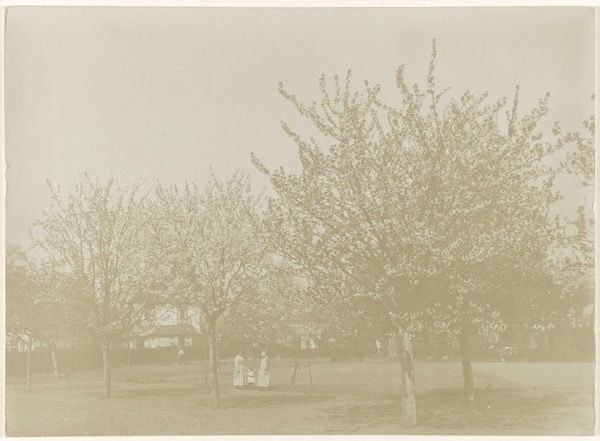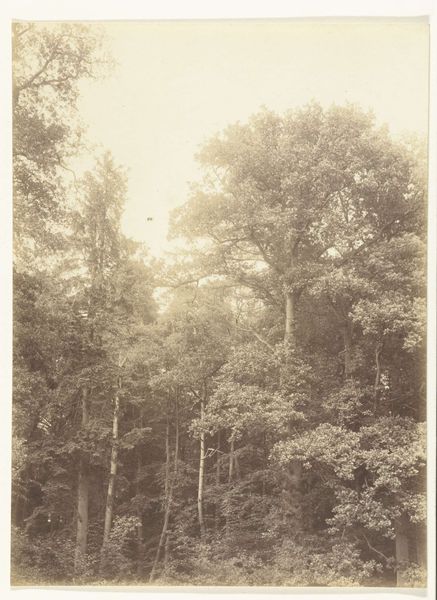
photography
#
natural shape and form
#
natural formation
#
pictorialism
#
organic shape
#
nature photography
#
landscape
#
nature
#
outdoor photography
#
photography
#
outdoor scenery
#
nature friendly
#
nature heavy
#
nature environment
#
nature
Dimensions: height 166 mm, width 226 mm
Copyright: Rijks Museum: Open Domain
Curator: This is a photograph entitled "Douglas sparren", dating from somewhere around 1900 to 1940, by Richard Tepe. It's currently held in the Rijksmuseum's collection. What jumps out at you? Editor: There's an eerie quality. It feels like a faded memory. The way the tones wash over everything gives it an almost dreamlike softness, a romanticized, almost otherworldly stillness that both attracts and slightly unsettles. Curator: Interesting. I think it pulls from the pictorialist style that was popular then, attempting to mimic painting through photography. What do you read into the image's symbols and composition? Editor: The stand of evergreen trees themselves have always been linked with resilience and immortality, the color alluding to life's continuity. In a broader sense, evergreens connect to deep ecological and mythological significance: They have an aura of perseverance through time, a testament to the cycle of growth and death, hinting at greater processes that lie outside our immediate view. The monochrome amplifies this solemn permanence. Curator: Indeed, and this aligns with the values often associated with landscape photography: a pursuit of nature, solitude, and a contemplative, aesthetic perspective. The tonal unity that emerges across the scene produces an almost graphic reduction. But that soft focus has me curious… Is it hiding something, do you think? Or is it highlighting an inner feeling evoked by the landscape? Editor: Possibly both. Photography had evolved to a point where they could alter images—manipulating elements like texture—and it looks as though this photograph uses focus, or lack of, as a gateway. Think of fairy tales or folk narratives… The monochrome aesthetic lends itself to this symbolism. They say fog obscures something hiding; perhaps it's just as often hiding itself! Curator: Absolutely. I never tire of exploring all the possible reasons and feelings one can connect to images like these. Editor: Yes, the trees certainly ask us some interesting questions about survival and visual meaning.
Comments
No comments
Be the first to comment and join the conversation on the ultimate creative platform.
